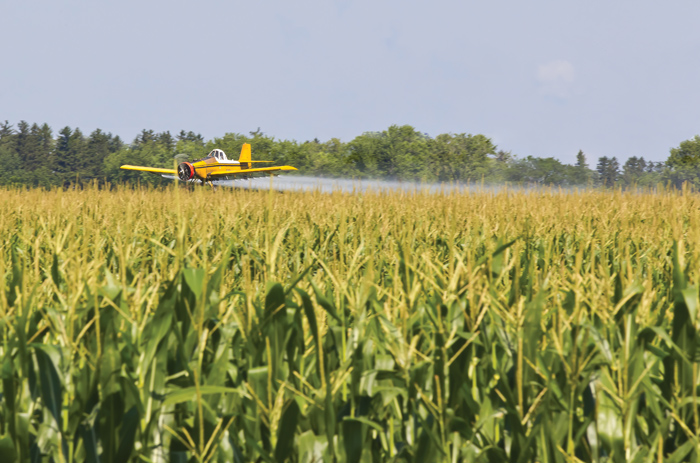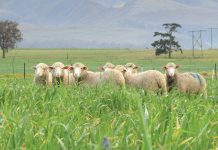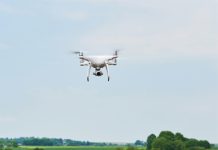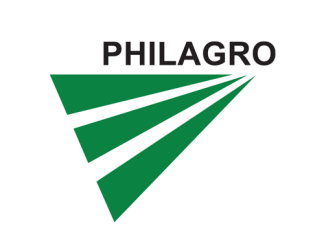
marketing and com-munications manager, CropLife SA
When it comes to planning a crop protection spray programme for the season, there are various aspects to consider for achieving optimal results – one of which is the correct application method. Producers have a variety of options available to them, providing of course that the crop protection product is registered for the purpose and the application method they envisage to use.
One of these options, if allowed by label instructions, is aerial application. In some instances, it may be the only suitable application method if, for example, crop fields are too wet for ground-based spray equipment. Other times aerial application is the best solution due to the crop growth stage or structure – again, only if the label instructions include aerial application.
Advantages of aerial application
There are several advantages of aerial application, such as the ability to treat larger areas in a short period of time; reduced volume of water that needs to be transported; not risking mechanical damage to the crop or soil compaction as well as not spreading weed seed or diseases by means of equipment as may be the case in ground-based applications. Some of the disadvantages, however, include sensitivity to adverse meteorological conditions; availability of safe landing strips along with good quality available water at the landing strip; a higher risk of incompatibility in tank mixtures and – of course – the danger of obstacles such as trees and power lines close to the target areas.
In addition, the cost is not always economically viable when spraying smaller areas of land. One matter of serious concern is damage inflicted to surrounding crops, especially with herbicide applications if aerial application is not done strictly by the book. Whatever the reason for choosing this method, the various parameters involved in the responsible application of crop protection products need serious consideration. Below are some of the aspects that a producer needs to pay attention to when choosing aerial application.
Meteorological conditions
Weather conditions need to be considered when using any agrochemical application method. However, there are additional factors to be cognisant of in aerial application.
Wind speed
Spraying of pesticides must cease at wind speeds of 15 km/h or more, or at 10 km/h for glyphosate-containing herbicides. This rule applies to both terrestrial and aerial application. In addition, operators and producers must be aware of temperature inversion under calm conditions when wind velocity is below 5 km/h. Inversion conditions normally prevail in the early morning and occur when cool air on the surface is prevented from moving upwards by a pocket of warm air overlying it. This causes spray mixture to remain suspended in the air, while not being deposited onto the target. Any of these factors can cause serious off-target drift and should be avoided at all times.
Relative humidity
Application should not be done when the relative humidity is 40% or less, or if the difference between a wet and dry bulb thermometer is eight degrees or higher. This is because the relative humidity affects how quickly a droplet can evaporate. In addition, the rate of evaporation can lead to spray drift because bigger droplets could evaporate into smaller, drift-prone droplets.
Ambient temperature
Temperature affects both inversion conditions and relative humidity. Spraying should not occur during the heat of the day, because high ambient temperatures result in water evaporation from the spray droplets, a reduction in droplet size and poor deposit onto the target. If temperatures are above 30°C, the application must be rescheduled.
Other meteorological conditions to consider include the probability of rain (as the agrochemical may not be rain fast) or avoiding application when there is heavy dew covering the crop.
Spray volume, droplet size and distribution
Some labels on contact agrochemicals recommend higher volumes and droplet densities. In the case of contact remedies, a denser droplet coverage is usually required than for remedies with systemic activity. With regards to spray volume, 30 ℓ/ha to 40 ℓ/ha is generally indicated for aerial application. However, these low volumes may not be effective against certain pests such as the fall armyworm in its advanced developmental stages in maize. Insect pests that hide in the plant whorl are then unaffected, because the low spray volume does not allow the active ingredient to penetrate the plant whorl. For normal pests and diseases, even the low dispensing spray mixture volume may be advantageous, because the aircraft’s motion assists to effectively deposit the spray mixture onto the target.
With regards to droplet size, the specific hydraulic nozzle size in aerial spraying is chosen to control the flow rate and not to obtain a specific droplet size spectrum as in the case of soil application. Instead, the use of the relative airspeed over the nozzle provides the different droplet sizes. With regards to hydraulic nozzles, different degree settings are used relative to the flight direction to obtain a certain size droplet. Larger angles relative to the flight direction contribute to bigger droplet sizes.
The effect of wingtip vortices in droplet distribution
Wingtip vortices are the result of the lift process generated by the shape of the wings and aerodynamic flow of the air. It is essential that operators avoid droplets getting trapped by wingtip vortices as the droplets will then need to travel a further distance to the target and can evaporate. In addition, these droplets are carried higher into the air before they start falling to the target, meaning smaller droplets are blown away from the top of the vortex, which can potentially cause drift damage.
In order to prevent the droplets getting into the vortex, the nozzles should be placed within the inner 66% to 75% of the wingspan. Another option is to install winglets (ag-tips) on the tips of the wings, eliminating the vortex effect to a certain extent and improving droplet distribution across the swath. Note, however, that certain manufacturers do not allow this due to increased forces to the main spars of the wings.
The flying height and aircraft altitude also need to be considered. Pilots should take care not to fly too low or spray while banking or diving down into the field. This could strengthen aerodynamic air currents, forcing droplets into the vortex. Operators should fly straight and level at 3 m to 5 m above the crop canopy in order to solve this problem.
Regulatory considerations
Three sets of regulatory tools govern the aerial application of pesticides, namely the Fertilizers, Farm Feeds, Agricultural Remedies and Stock Remedies Act, 1947 (Act No. 36 of 1947), the Civil Aviation Act, 2009 (Act No. 13 of 2009) and the South African National Standard for Aerial Application of Pesticides (SANS10118) together with the supporting regulations of the two acts.
Act No. 36 of 1947
According to this act, a pesticide that is intended for aerial application must be registered for such application and must have certain clauses from SANS10118 printed on the label as well as specific instructions for aerial application in the directions for use. If this information does not appear on the label, then the remedy may not be used in aerial application. The Registrar of Act No. 36 of 1947 may impose certain conditions on any registered pesticide, such as limitations on where a remedy may be applied geographically. It is therefore critical that producers and operators study the product label carefully and comply with any restrictions.
The pest control operator (PCO) regulations of Act No. 36 of 1947 specify that a pilot of an aircraft used for aerial application must be registered as an aerial application PCO by the Registrar of Act No. 36 of 1947 to offer such services, subject to other requirements of the Civil Aviation Act and its regulations.
SANS10188
SANS10118 has definitive instructions on aerial spraying and outlines the responsibilities of all the different parties involved. One of these is that the pilot must record and log all meteorological conditions as well as other information pertaining to the specific spraying operation. This log must be signed by the producer or his representative directly after the spraying was completed or stopped.
The producer, on the other hand, must inform the pilot of any sensitive areas such as adjacent crops, natural areas, wetlands, human habitation, community centres and places of animal husbandry, prior to commencing the spray operation so that those areas can be avoided. The target area, including the buffer zone, must be clearly marked out and the information provided to the pilot. In addition, the producer has a responsibility to inform his/her immediate neighbours of any planned aerial application operations.
The Civil Aviation Act
There is a set of regulations in the Civil Aviation Act specifically regulating aircraft (including drones) and pilots operating aircraft for aerial application of pesticides. Any aircraft, be it a helicopter, fixed-winged or microlight aircraft, or drone, must be licensed and certified for aerial application of pesticides, sometimes also referred to as crop dusting. Prior to registering as an aerial application PCO, a pilot will need to be licensed as a commercial pilot with an agricultural rating for aerial application. In addition, the pilot must be in possession of the necessary radio telecommunication equipment as well as have the competency to operate it. All of these requirements apply to drone operators as well. Producers must therefore insist on checking the certification of a pilot along with his/her aerial applicator’s registration under Act No. 36 of 1947. They must also ensure that the aircraft is licensed and certified for crop spraying.
As can be seen, there are numerous considerations when choosing aerial application as a method for applying crop protection remedies. Producers should insist on only using products that are registered specifically for aerial application and label directions should be followed accordingly.
Note: Some of the information in this article was obtained from CropLife South Africa’s basic crop protection course, module 3,7.






























